Blog Archives
Squat analysis
In off season and during the season multiple different sports athletes will have to do squats as a part of their training routine to develop stronger foundation for their specific sports. Many athletes will use squats. Team sports such as, football, American football as well as individual sports such as tennis, running, cycling. The compound exercise/movement, such as squat, is going to activate multiple muscle groups and joints at the same time.
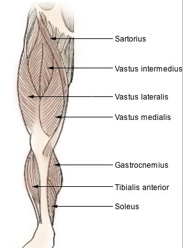 During squat the muscles that are going to be targeted mainly are the quadriceps (group of muscles) and gluteus maximus. When squatting, quadriceps and gluteus musles are going to be the agonists. Quadriceps also called as quadriceps femoris has four heads which is the translation from Latin “four-headed muscle of the femur” (femur – the long bone the quadriceps muscles surround). Four heads of the quadriceps are the lateral head/vastus lateralis (outside of the leg), medial head/vastus medialis (inside of the leg (important for knee health), and vastus intermedialis (between the two other heads) this head is under the rectus femoris which is the fourth head of the quadriceps.
During squat the muscles that are going to be targeted mainly are the quadriceps (group of muscles) and gluteus maximus. When squatting, quadriceps and gluteus musles are going to be the agonists. Quadriceps also called as quadriceps femoris has four heads which is the translation from Latin “four-headed muscle of the femur” (femur – the long bone the quadriceps muscles surround). Four heads of the quadriceps are the lateral head/vastus lateralis (outside of the leg), medial head/vastus medialis (inside of the leg (important for knee health), and vastus intermedialis (between the two other heads) this head is under the rectus femoris which is the fourth head of the quadriceps.
Gluteus Maximus (largest muscle in the human body) is the second muscle that is targeted during squat which is also an agonist. Both quadriceps and gluteus Maximus are working together to achieve the extension of the leg and therefore knee extension. The gluteus Maximus is heavily activated during the concentric phase of the squat therefore it is important to have great range of movement to for greater muscle fibre recruitment in gluteal muscles. This will happen because there will be longer distance to travel to achieve full extension of the knee and hip. Gluteus maximus originates from coccyx, sacrum and iliac crest which provides large base for attachment.
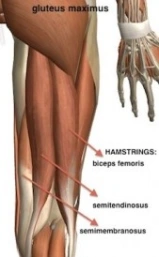
Hamstrings are also the heavily involved in the squats, they act as synergists which means that they help to create the movement as well as stabilise it. Hamstrings has three heads which are biceps femoris, semitendinosus and semimembranosus. Hamstrings shorten during concentric phase to bring the knee in extension. Hamstrings lengthen during the eccentric phase (negative movement) to flex the knee. In the study “Hamstring activation during lower body resistance training exercises, by Edden, International Journal of Sports Physiology and Performance, 2009” using EMG (Electromyography) it was found that hamstrings are not recruited significantly when comparing to other hamstring exercises such as seated leg curls, good mornings and Russian curls where EMG activity was much greater. Therefore, this study suggests that squat is the least effective for recruiting muscle fibres in hamstrings compared to other hamstring movements.
Secondary muscles that are worked when squatting are calves. Gastrocnemius (has two 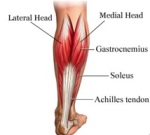 heads, medial and lateral) and soleus. Gastrocnemius originates from lower femur but soleus from tibia. Both insert in heel bone (calcaneus). Both muscles are responsible for plantar flexion of the ankle during the squat which is going to occur during the concentric phase of the squat when the angle between the sole of the foot and femur will increase.
heads, medial and lateral) and soleus. Gastrocnemius originates from lower femur but soleus from tibia. Both insert in heel bone (calcaneus). Both muscles are responsible for plantar flexion of the ankle during the squat which is going to occur during the concentric phase of the squat when the angle between the sole of the foot and femur will increase.
 The antagonists during the squat are hip flexors. Hip flexors allow the flexion of the hip (see image). There are multiple hip flexors, these include inner hip muscles (iliopsoas) which are the main flexors of the hip, but there are many others that are important in flexion. These include front muscles of the thigh (rectus femoris, Sartorius) as well as Gluteus Maximus works as hip flexor.
The antagonists during the squat are hip flexors. Hip flexors allow the flexion of the hip (see image). There are multiple hip flexors, these include inner hip muscles (iliopsoas) which are the main flexors of the hip, but there are many others that are important in flexion. These include front muscles of the thigh (rectus femoris, Sartorius) as well as Gluteus Maximus works as hip flexor.
During squat whole body has to be tight, shoulder blades (retracted) need to be pulled together, posterior chain, and back muscles need to be pulled together (retracted).During squats core muscles are also going to be involved as they ensure that body can be held upright avoiding forward lean.
Squats start by tightening your gluteus maximus, chest up, shoulders slightly back, toes slightly out. Movement starts by bending knees, vastus medialis and other quadriceps muscles will activate, as the movement continues the hamstrings and gluteus maximus are activated (eccentric phase) and quadriceps are lengthening.
During eccentric phase of the squat multiple joints are going to be involved:
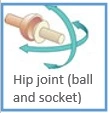 Hip joint will be involved in the hip flexion during the negative phase of squat. It is a ball and socket joint therefore it is flexible. The muscles that assist the hip joint during the movement are gluteus maximus and all three heads of hamstrings (biceps femoris, semitendinosus and semimembranosus).
Hip joint will be involved in the hip flexion during the negative phase of squat. It is a ball and socket joint therefore it is flexible. The muscles that assist the hip joint during the movement are gluteus maximus and all three heads of hamstrings (biceps femoris, semitendinosus and semimembranosus).
The second joint that is going to be involved in eccentric phase is knee joint (is the largest joint in human body) which is going to allow knee flexion. Knee joints are hinge joints. All quadriceps 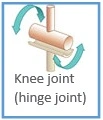 muscles (vastus lateralis, vastus medialis, vastus intermedialis and rectus femoris) are going to assist the knee joint extension.
muscles (vastus lateralis, vastus medialis, vastus intermedialis and rectus femoris) are going to assist the knee joint extension.
The third joint is ankle joint, which is involved in dorsiflexion as the angle between the tibia (shin bone) and phalanges (toe bones) decreases. Ankle joint during squat only allows dorsiflexion (during upward phase) and plantarflexion (during downward phase) movement, therefore it is also a hinge joint. Other joints are responsible for different movement in the ankle (subtalar joint) but it doesn’t assist during the dorsiflexion. Subtalar joint is going to be involved when athletes are going to have poor technique and one of the sides of the feet are going to come off the ground creating inversion if the inside of the of the foot is coming off the ground or eversion if the outside of the foot is coming off the ground. Feet should always be placed steady on the ground with equal distribution of the weight throughout the sole of the foot or in other cases more force should be put on the heels. The muscles that are going pull as a result of contracting to make ankle joints plantar flex are gastrocnemius (calves), soleus and other muscles such as tibial posterior muscle which are going to stabilise the movement.
At the bottom of the squat if it is held position, isometric contraction occurs which means that the muscles are still under load but no movement occurs.
The final phase of the squat is the concentric contraction where quadriceps muscles, contract/shorten and opposing muscles (hip flexors) lengthen. The joints that were involved during the eccentric phase, hip joints, knee joints and ankle joints are also going to be involved during the concentric phase but instead of flexion they are going to assist extension of the hip, knee and plantarflexion of the ankle as the angle between sole and tibia increases.
During all phases of squat back muscles and core muscles are going to be under pressure to ensure stabilisation.
The stance when squatting, for example wide or close is also going to determine where the emphasis on the muscle is placed. For example, when squatting with close stance the adductors are going to take more workload. When squatting frequently and under heavy load it is important to switch up the stance as the adductors can be overworked and cause pain.
Check out me squatting and make sure you subscribe, more videos to come: